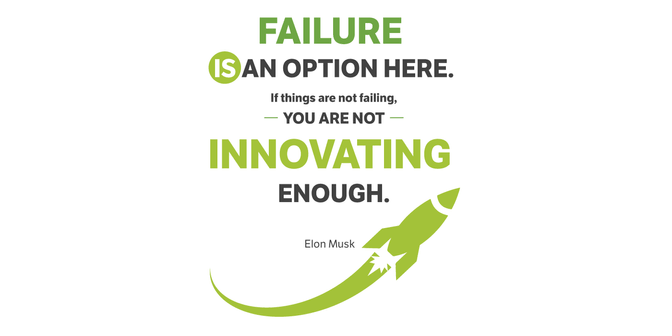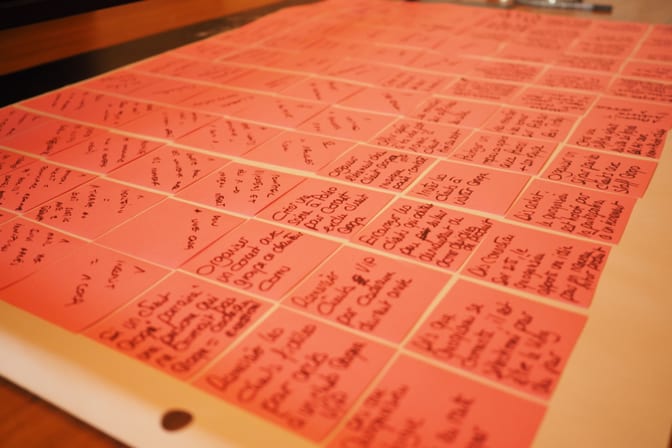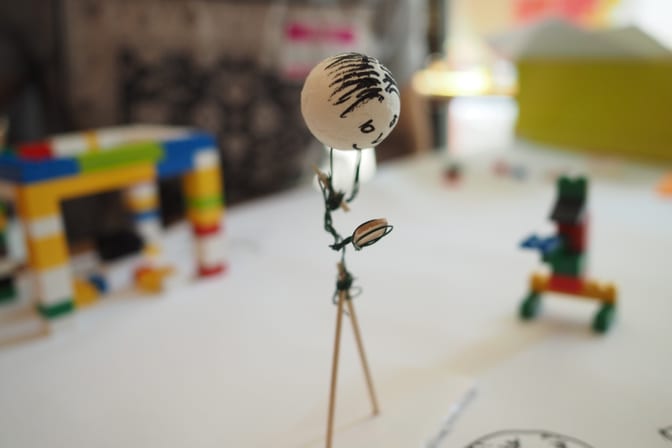Innovation and changes are risky meanwhile necessary. UXers can support change and deal with risk management. Discover in 3 steps, how UX can help dealing with these fears… and help bringing innovation.
In my last blog post, we realized that companies are faced with an ambiguous situation, between innovation and users loyalty. Meanwhile users want cutting the edge experiences and dislike learning news things.
1: Deal with these bad feelings concerning change in companies
I have bad news. If your company is struggling at innovating, maybe it is because it is excellent at killing good innovation ideas. Big companies are expected to innovate, but managing people in such companies just freak out at the simple idea of dealing with edgy ideas. Nobody wants to be the ones who brought a massive failure in the history of the product, or worse, in the collective memory of people about the company. Managing people are often more afraid of the negative consequences of their actions than interested by the very exciting potential behind this very original idea. Innovation seems risky, and can lead to failures.

No matter how careful you act, you never know how your new product will be received. There is always a risk and failure is an option.The risk shouldn't prevent you from innovating. Remember, only the companies that innovate survive. There is more to lose at doing nothing than at failing. Ask Kodak if they would still do the same if they were given a second chance to survive.
Help your decision takers with an environment where they can actually be aware of the whole uncertainty of each proposition. Put them in a danger free environment and allow them to be comfortable with uncertainty and to tolerate the unknown that comes with creative ideas, as it's a trainable skill, and a mandatory one to success.
Create an environment prone to innovation
Invite the management to test these ideas, and assure them that they can safely try and fail until they succeed. And invite them to fail as fast as possible. After each failure, analyze what you have, be it data, testimonials, learn from it, adapt, and iterate on your product, and fail again, and learn and modify and fail again and again.
Thomas Edison tested 6 000 different natural substances to create his first electric light bulb. He failed thousands of times at finding the proper elements to build his light bulb. How many times did you fail?

Failing helps getting closer, little by little.
As long as a company does not accept the risk of failing, it will miss the benefits of succeeding. Once your company is really ok with taking those risks, and once you provide a favorable environment to innovation to your teams, then you can go to the next step and ask user's participation.
2. Learn about your users and their resistance to changes
As human beings, your users have a set of characteristics commonly shared, no matter where they come from in the world, no matter why they use your product, no matter which language they speak. They can have feelings, and they also have memory. This sounds dramatic I know…
Understand the global cognitive economy of the human being
Learning costs (a lot of) energy. You have to actively put your attention into something new, and try to understand how it works, what you have to do and when you have to do it. We do this to be able to react quickly during the following exposure “ ok to launch the song I just have to tap here once”
What happens when we suddenly realize that what we learned _the hard way _is not working anymore? The connexions that occurred in our brains are obsolete, and the whole energy invested in this old wiring is wasted. We have to learn a know how again. Either we accept it, either we struggle.
When a feature is abandoned, or modified, in a software, the users have to readapt to it, or find alternative ways, or worse, alternative softwares to be able to do it the old way. Some will shout at you on social networks, and will spend X times the amount of energy that would have been sufficient to learn the new way, just not to adapt. And sometimes features are abandoned because of new innovative features, or just because they are almost never used.
Unfortunately, we tend to minimize energy expenses, and we try to save our energy. If we have to learn something new, a new way to do, then we basically will behave as if we were suddenly endangered. Change is a very good reason to freak out for many persons. May it be for silly things or for deep moves, users will complain , this is called resistance to change.
Habits have a tough life. You won't let users abandon easily their habits, just because you suggest them to do so with a new feature. If you want massive adoption of your product / feature / service by the users, you have to prove them that it it worth changing. Why would they abandon their beloved product for yours?
Time is counted, and so is everyone's attention span. If you cannot demonstrate the benefits of this new product / feature simply, in just one minute, then the risk is high that your whole product or feature will be ignored.
3. Innovate with your users thanks to Design Thinking.
As mentioned, users know parts or even your whole product, and know things you should improve. It's a pretty good start. But it's not enough. You should gather your users' opinion.
Question your users
Put them together in groups, in a cool and calm place, and invite them to solve your design problems. “How might we __ “ or “How can we become the best at __ “ “How might we onboard new users so they feel part of our community” “How might we remove any frustration on our customer's side”…
Make as many groups of users as you want and let them choose a design challenge. Be sure there are some challenges left, so that they feel in control, and not forced to deal with something they did not choose.
Invite them to throw a lot of ideas, without any judgement on quality. Focus on quantity first. Once you have one hundred ideas, abandon the ones you really dislike (not financially healthy, or damaging for the company's reputation), cluster the ideas into themes, and ask your groups to select one theme they want to pitch to the other groups.

100 Post-it challenge
Start prototyping
Once the theme is selected, and the feedbacks from other groups are taken into account, start prototyping! Give them big paper leaves, post its, ropes, legos, cutters, wooden sticks, wool, duct tape, corks, anything that can help building something quickly.

Even very abstract prototypes can help you communicate your ideas to innovate.
Listen to your users' ideas
Let them express all the crazy ideas they have in their theme, and then let them pitch, take feedback, iterate, and slowly evolve to something more feasible.
And Voilà!! you get brilliant ideas on different subjects for your product, almost all feasible now. You still have to prioritize, begin fine tuning design, do user testing sessions, develop, do user testing sessions again on the ready to go live product / feature / service.
Take feedback and adapt
When arriving at this point, you minimize your risks, and only propose the new features / products to a limited and representative sample of your users. You take feedbacks, adapt, retest, and then only you push it to the masses.
To conclude
UX can support changes with in three main way:
- Give the companies the “Fail Fast” attitude / environment they need to dare to innovate
- Learn from your users, why they refuse change, what would motivate them to follow you
- Involve you users in your innovation process thanks to Design Thinking activities
Once you have followed these advices, my final tip is to invest even more effort on User's onboarding for the new product / feature. Remember, if the user doesn't get it in one minute, he will leave and nobody wants this to happen!

